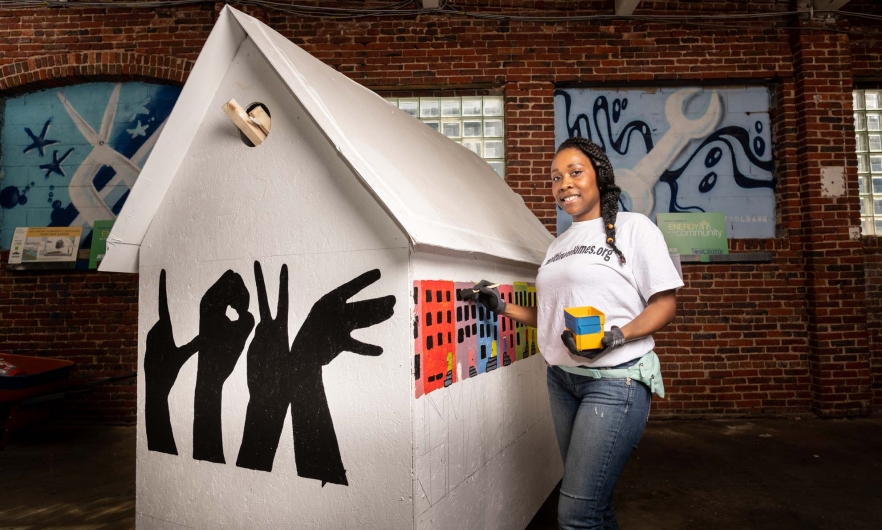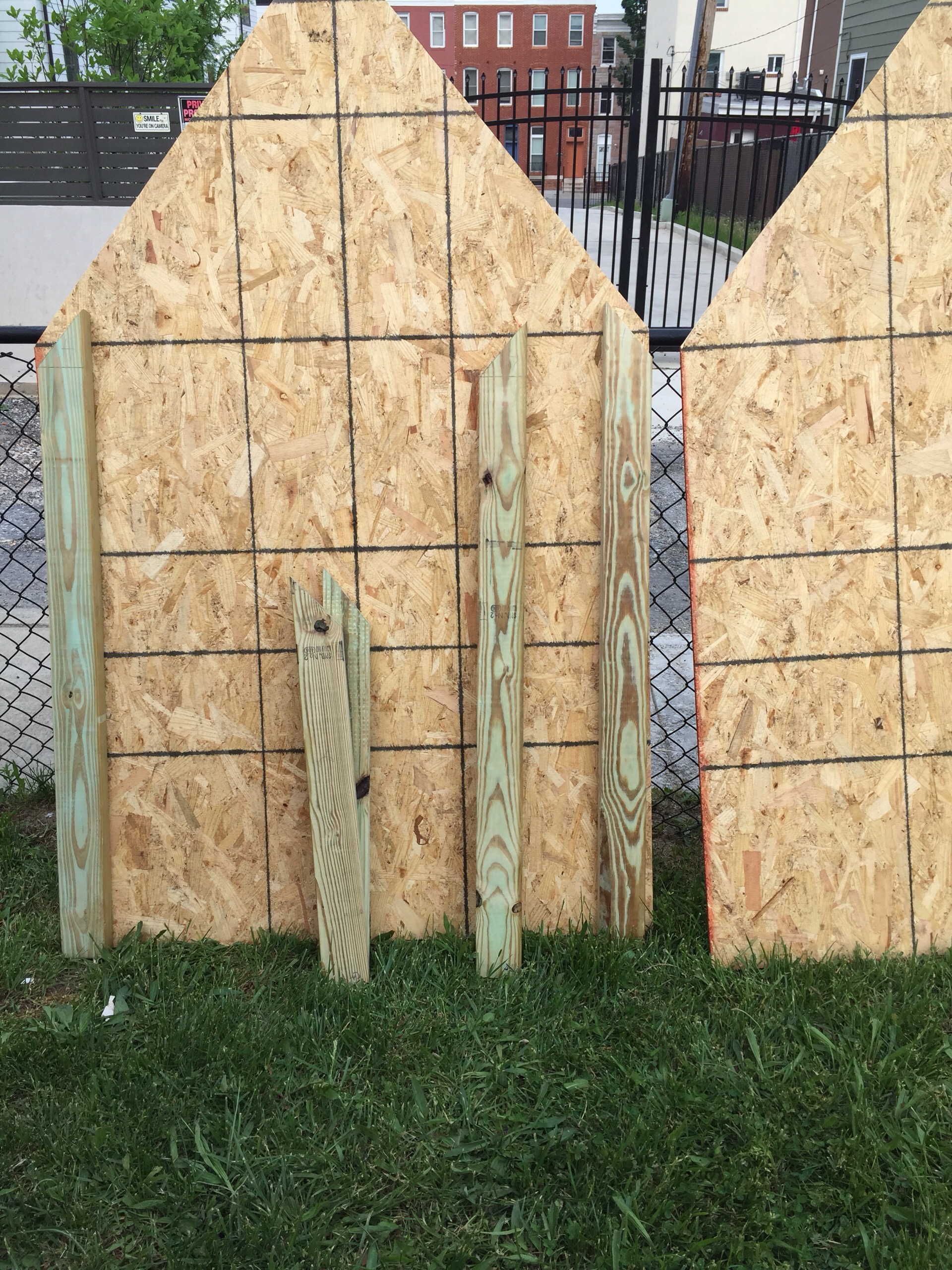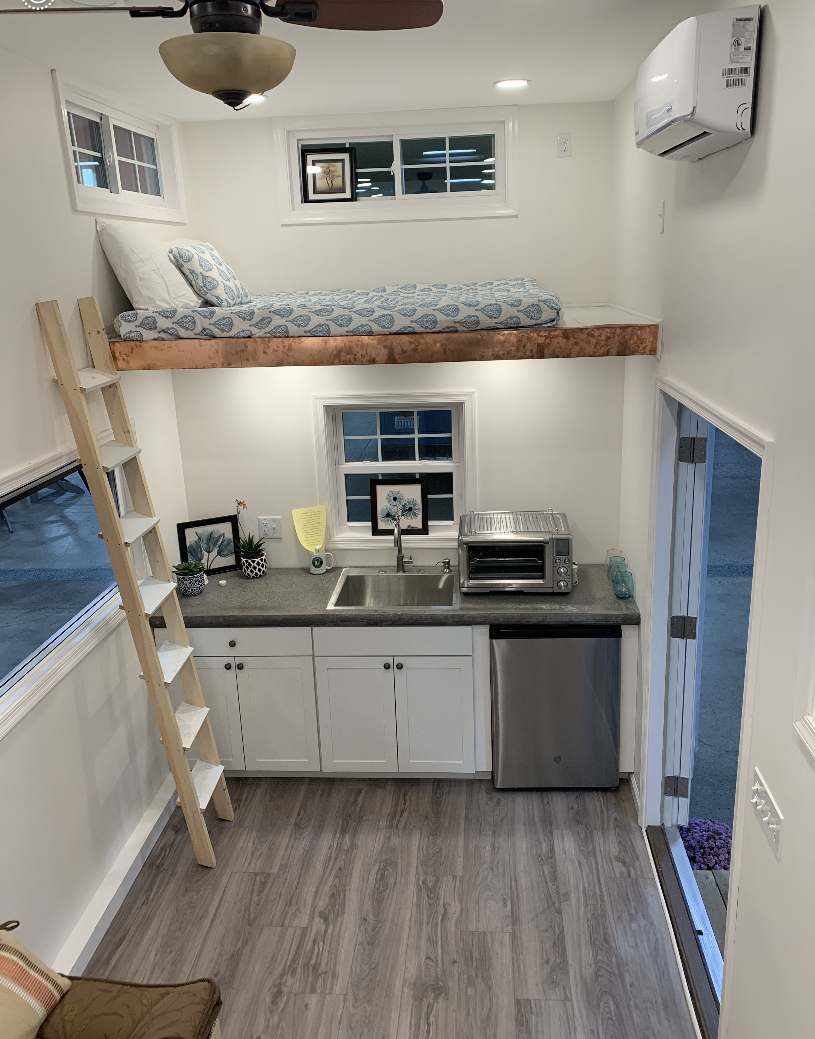UHI Community Voices:Combating Homelessness During the COVID-19 Pandemic

*Each month we will feature an amazing community advocate or leader that we have the honor of working closely with at the Urban Health Institute. This month we would like to place a spotlight on our 2020 Bunting Neighborhood Leadership Fellow, LaQuida Chancey, the founder and executive director of Smalltimore Homes.
On a Saturday morning you are likely to find LaQuida Chancey building a micro-shelter or tiny home in Baltimore. As the founder of Smalltimore Homes, LaQuida’s mission is to decrease homelessness in Baltimore City and address the dark history of Red Lining that exists in West Baltimore.
“With Smalltimore Homes I had to start it because no one was interested in home ownership, but there’s more homeless people than I could ever afford to give a home to. I wanted to make an impact, so I went to those who are most vulnerable […] seeing what Johns Hopkins can do to East Baltimore and knowing that wasn’t happening in West Baltimore, I asked myself how I can do more?”

If you’ve ever drove under I-83 near Centre and Guildford you might’ve come across tents and other small shelters that house one of Baltimore’s most vulnerable populations, the homeless. Often these shelters become damaged, items belonging to their occupants become lost, and they are often forced to move from their location. To combat this issue, LaQuida came up with the idea to build micro-shelters. Micro-shelters are small homes, around 35 – 150 square feet, on wheels. These homes are built with sturdy material that can endure harsh weather conditions. Created with lumber, Oriented strand board (OSB), plywood and nails, micro-shelters do not have the infrastructure for plumbing or electricity but do include solar lights and water filtration equipment. The wheels allow for easy transport around the city and allow for its occupants to keep their belongings in a secured place.
LaQuida shared with us many of the issues the homeless community are facing amid COVID-19. Shelters had to shut down or minimize the number of guests allowed to align with social distancing orders, leaving more people on the street. Many homeless individuals have underlying health conditions and predispositions due to lack of access to health care, therefor making them more susceptible to the COVID-19 virus, and while getting access to PPE and sanitizing materials at one point was a struggle for many Americans, it was completely inaccessible to those who are forced to call the streets their home. To respond to growing needs, LaQuida expanded her work through Smalltimore Homes and created handwashing stations for the homeless that included soap, PPE materials, and sanitizer. These kits allowed for those most vulnerable to this deadly virus to stay as safe as possible.
Combating homelessness is not the only battle LaQuida has tasked herself with. Increasing homeownership, eliminating the dark of history of Red Lining, and creating thriving communities is also a part of LaQuida’s mission.
“Around 2015 I started a real estate investment company thinking I would create an army of first-time home buyers who looked like me, only to be thrown in to a market of people who only wanted to rent, and it made me so sad.”, explained LaQuida.

This revelation birthed her vision of building a tiny home community. Combining her resources and expertise from her career in the IT and tech world, LaQuida began building tiny homes to encourage homeownership among those who might not desire to live in a single family or town home. At around $50,000 selling price, these homes come equipped with the basic necessities for living such as plumbing, a kitchen, loft bed, heating and AC unit, and a small bathroom at more than half the price of your average home in Baltimore.
She desires to place them in West Baltimore neighborhoods to responsibly revitalize communities that are often overlooked or abandoned revitalize communities that are often overlooked or abandoned. LaQuida believes this will not only provide opportunities to those who are often denied access to loans and other home ownership resources but can help reduce the City’s housing issues, such as blocks filled with vacant homes.
“Doing the work that I do and knowing that Red lining exits in Baltimore and that the school rate before virtual school used to be a 50% graduation rate but there’s a huge digital divide so that’s only going to get bigger. There’s all these issues, that although don’t impact me directly because I’ve been afforded the resources to navigate these systems for it to not bother me in my daily life, but it bothers me on my conscious and so I have to be active.”, shared LaQuida.
In addition to working to end the ongoing epidemic of homelessness, LaQuida has also been involved in a few other projects and initiatives, such as her recent veterans week in which she partnered with LifeStraw to sponsor the building of micro-shelters. You can learn more about this initiative at https://www.smalltimorehomes.org/post/smalltimore-homes-veterans-week-press-release. And has been lending her entrepreneurship expertise and presented at Johns Hopkins Connects recent Entrepreneurship Matters series.

LaQuida and her fellow 2020 Bunting Neighborhood Leadership Program cohort members will be joining the 2021 cohort next year to finish out the program. She looks forward to connecting with her current cohort more and finding new ways to network with the 2021 group. Since the pandemic she has enjoyed connecting with 2018 Bunting Fellow, Jonathan Moore, and working with 2020 Bunting Fellow, Lamontre Randall, whose group, Kioba Ventures, collaborated with LaQuida to lead a workshop on building homes with Smalltimore Homes’ volunteers.
You can learn a little more about LaQuida on our website bit.ly/2020BuntingFellows2. To learn more about Smalltimore Homes and how to get involved, visit https://www.smalltimorehomes.org.
*Smalltimore Homes is currently in need of volunteers to build Micro-shelters and they meet every Saturday. You can learn more about how to volunteer at bit.ly/smalltimorevolunteer.
